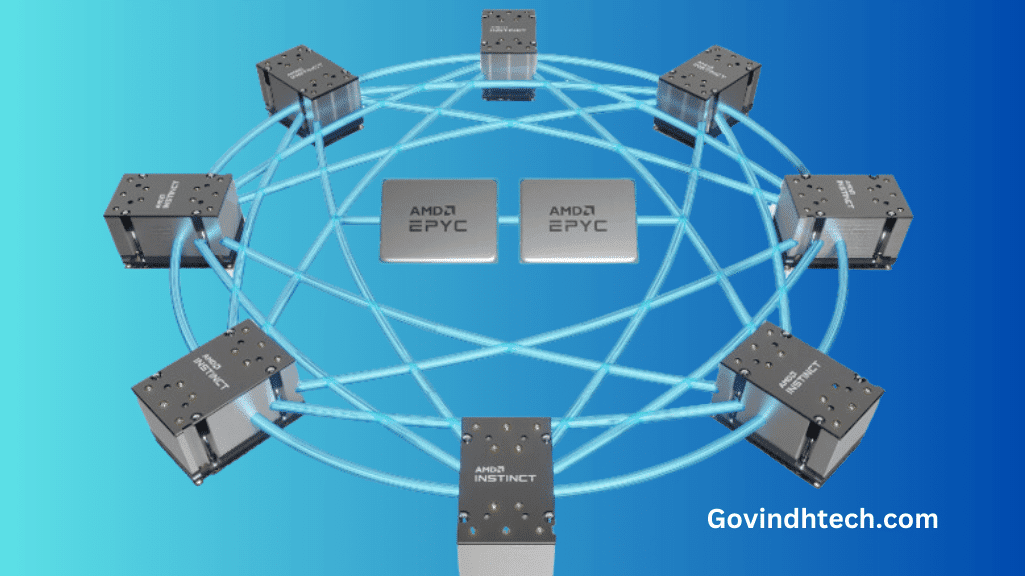The importance of improving energy efficiency in high-performance computing (HPC) to address the environmental impact of data centers. As the demand for HPC continues to grow, energy consumption becomes a limiting factor for scalability and cost-effectiveness.
AMD recognizes its role in addressing these challenges and has set an ambitious goal to increase the energy efficiency of processors running HPC workloads. They aim to achieve an energy efficiency improvement that is 2.5 times faster than the industry-wide improvement made in the last five years.
To achieve these goals, AMD has developed the AMD Instinct™ accelerators, which offer high performance per watt at the device and system level.
They have implemented several key technologies to improve energy efficiency:
Architecture Technology:
The AMD CDNA™ 2 architecture in the MI200 Series provides significant advancements in computational capabilities for HPC and AI workloads. It includes enhancements to Matrix Core technology, enabling exascale levels of performance. Compared to the previous generation, the MI200 Series offers a 4x improvement in FP64 vector TFLOP/s and a 2.5x improvement in FP64 TFLOPS/watt.

Packaging Technology:
AMD leverages chiplets and advanced packaging technology to improve performance and efficiency. Chiplets allow the use of different technologies for different functions and enable denser interconnect density, reducing data transfer energy. MCM is the world’s first multichip GPU designed to maximize compute and data throughput in a single package.

AMD Infinity FabricTM interface enables bi-directional bandwidth of up to 400 GB/s between two GCDs at 25 Gbps and low power.
Elevated Fanout Bridge (EFB):
AMD uses EFB 2.5D bridge innovation to connect CDNA chips to HBM2E memory stacks. This approach reduces complexity, increases scalability, and lowers costs compared to traditional interposer-based designs.
Communication Technology:
Efficient data movement is crucial in high-performance computing. AMD employs its Infinity Architecture, which provides high-speed communication between CPU and GPU, as well as GPU-to-GPU communication. The in-package AMD Infinity Fabric™ interface and external Infinity Fabric™ links enable efficient and high-bandwidth communication between components.

AMD’s efforts in improving energy efficiency have resulted in their CPUs and GPUs powering some of the most efficient supercomputers on the Green500 list. To further advance efficiency and performance gains, AMD is developing the MI300 accelerator, which will be the world’s first integrated data center APU combining CPU, GPU, and shared HBM.
In conclusion, AMD is committed to improving energy efficiency in HPC and AI to reduce operating costs and promote sustainability in data centers. They aim to achieve significant efficiency gains through innovations in architecture, memory, and interconnect technologies, ultimately contributing to data center sustainability and addressing the environmental impact of high-performance computing.
